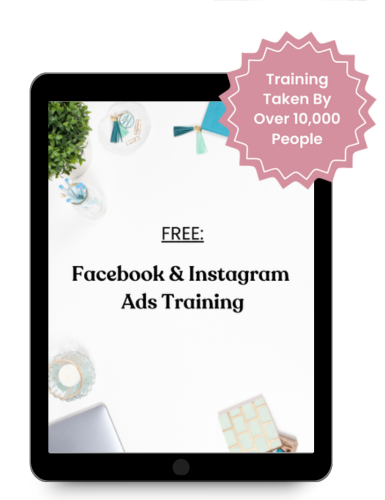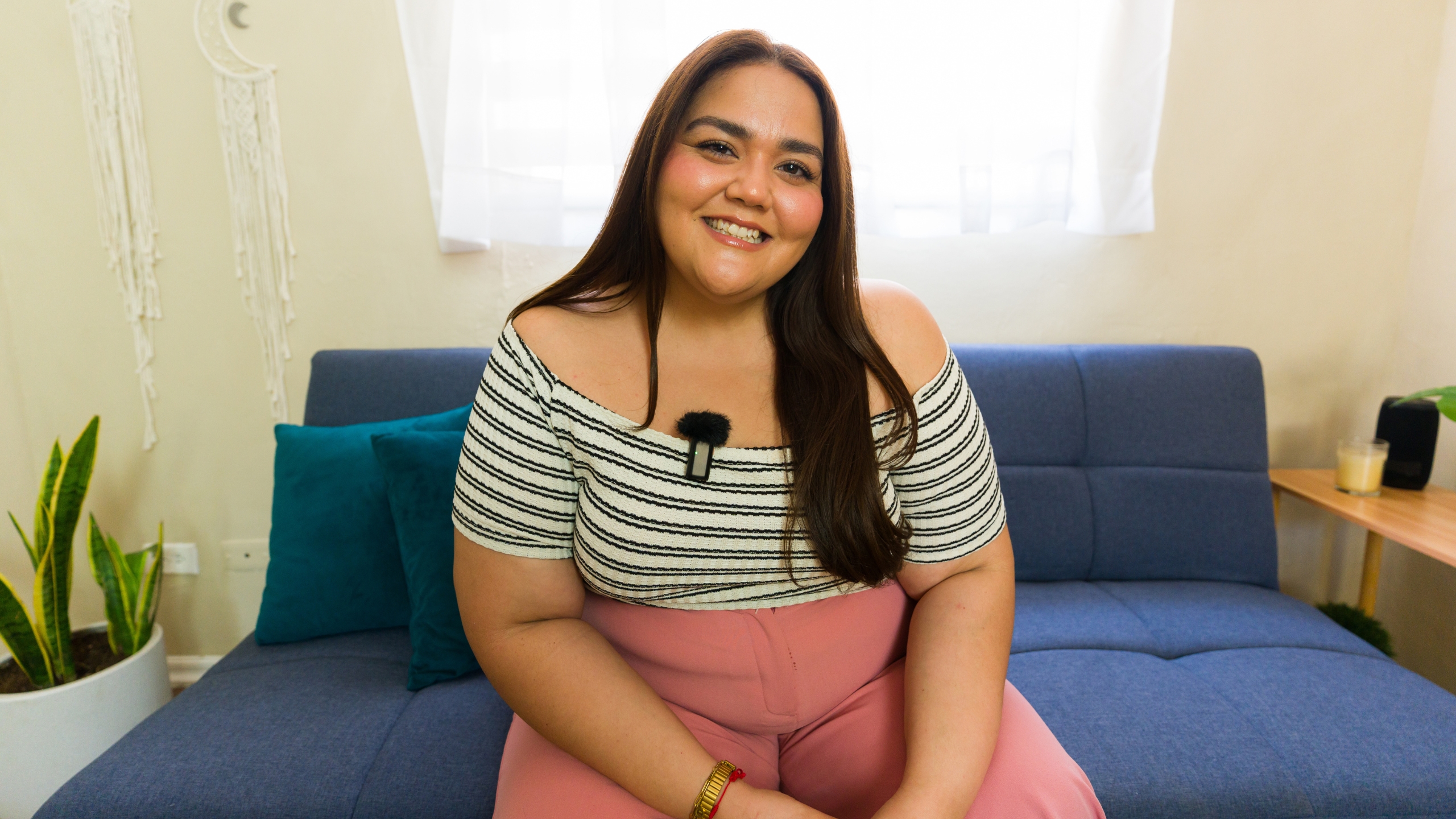Why your “ugly” scrappy ads will beat polished graphics every time—and how to create them in just 5 minutes
You've spent hours crafting the perfect Facebook ad. The colors match your brand guidelines, the fonts are on-point, and the graphics look magazine-worthy. You hit publish, feeling confident this masterpiece will finally crack the code.
Then reality hits: crickets. Low engagement, sky-high costs, and a bunch of random people who'll never buy from you filling up your email list.
Here's the uncomfortable truth that most course creators and online business owners refuse to accept: Meta doesn't care how pretty your ads are. The algorithm rewards engagement, not aesthetics. And those “ugly” scrappy ads you've been avoiding? They're probably going to outperform your polished creatives by a landslide.
If you're tired of burning through your Facebook advertising budget on ads that look great but convert poorly, this guide will change everything. We're about to dive into the 5-minute scrappy ad challenge that's helping course creators and online entrepreneurs create high-converting Facebook ads without the design drama.
Estimated reading time: 13 minutes
💡 Want the full picture? This article goes hand-in-hand with Episode 313: Why Pretty Ads Fail (and What Makes Creatives Convert) of The Launch Lounge Podcast.
Pop in your earbuds and get the deeper dive.
👉 [Listen to the companion episode here]
Why Pretty Facebook Ads Fail (The Psychology Behind Scrappy Success)
Before we jump into the tactical stuff, let's talk about why your beautiful ads aren't working—and why scrappy advertising is taking over.
The Brain Science of Ad Engagement
Your potential customers' brains are processing information at lightning speed. In milliseconds, they're deciding whether to scroll past your ad or stop and engage. Complex, heavily designed graphics actually work against you here because:
- Cognitive overload: Too many design elements create decision paralysis
- Ad blindness: Polished ads scream “advertisement,” triggering immediate scroll behavior
- Trust barriers: Perfect graphics can feel inauthentic and sales-y
The Social Media Reality Check
Facebook and Instagram algorithms prioritize content that feels native to the platform. Your scrappy ad that looks like a friend's post? That's algorithm gold. Your TV-commercial-style creative? That's getting buried.
When people engage with content that feels authentic, Meta rewards you with:
- Lower cost per click
- Better reach and frequency
- Higher-quality leads who actually convert
The Conversion Truth About Ad Creative
Here's what 10+ years of Facebook advertising data tells us: benefits beat beauty every single time. People don't buy aesthetics—they buy transformations. Your scrappy ad that clearly communicates the outcome they want will always outperform the pretty one that leaves them guessing.
The 5-Minute Scrappy Ad Challenge: Your Step-by-Step Guide
Ready to prove that ugly ads win? Set your timer for 5 minutes. No cheating, no “just one more tweak.” Let's go.
Minute 1: Pick Your Dream State Visual
Your mission is simple: Choose ONE image that shows your ideal customer living their dream outcome.
Quick options that work:
Stock photo option: Find a woman (30-50) actually doing the thing your course helps with—podcasting, writing, teaching, creating content. Skip the posed headshots and go for action shots.
Customer content option: Use a photo or video of a real student getting results. Screenshots of their success, behind-the-scenes moments, or testimonial videos work beautifully.
Behind-the-scenes option: Show someone actually using what you teach. No face required—hands typing, someone recording a video, or a messy desk with course materials spread out.
❌ DON'T use:
- Your headshot
- Your logo
- Text-heavy graphics
- Anything that screams “AD”
✅ DO use:
- Real people
- Real environments
- Real outcomes
Minute 2: Write Your Hook (1 Line Only)
Your mission: One sentence that makes them think “That's exactly what I want.”
Formula: [DREAM OUTCOME] without [THING THEY HATE]
Examples that convert:
- “Build your email list without spending hours on social media”
- “Launch your course without the tech overwhelm”
- “Get clients without feeling salesy”
- “Create content without burning out”
❌ DON'T use:
- Industry jargon
- Clever wordplay
- Anything your neighbor wouldn't understand
✅ DO use:
- Their exact words (check your DMs, comments, reviews)
- Simple, clear language
- Emotional triggers
Minute 3: Add Your “What's In It For Me” Line
Your mission: One sentence that explains the immediate benefit.
Formula: Learn [SIMPLE SYSTEM] to [GET RESULT] in [TIMEFRAME]
Examples:
- “Learn the 3-step system to double your email opens in 30 days”
- “Discover the launch strategy that brought in $25K without burnout”
- “Get the framework that turns followers into paying clients”
Timer check: You should be at 3 minutes. If you're overthinking, move on!
Minute 4: Call to Action + Event Details
Your mission: Tell them exactly what to do next.
Keep it simple:
- “Join my free masterclass”
- “Grab your spot in my free training”
- “Sign up for the free workshop”
Add the basics:
- Day/date if it's live
- “Link in comments” or “Register below”
- No fancy graphics needed—just clear text over your image
Minute 5: Final Check + Post
Your mission: Quick scan and GO LIVE.
Ask yourself:
✅ Can I see the benefit in 2 seconds?
✅ Does this show their dream state?
✅ Would my neighbor understand this?
✅ Does it feel like content, not an ad?
If yes to all four—POST IT. No more tweaking.
TIME'S UP! 🚨
Congratulations! You just created a scrappy Facebook ad in 5 minutes.
Real Scrappy Ad Examples That Convert
Still feeling stuck? Here are real examples that work across different niches:
Example 1: YouTube Growth Course
Image: Someone hitting “record” on their phone in their kitchen or office
Hook: “Grow your YouTube audience without fancy equipment or a professional studio”
Benefit: “Learn the 5-minute video strategy that got me 10K subscribers in 90 days”
Example 2: Abstract Painting Course
Image: Student's colorful abstract painting on an easel (messy studio background)
Hook: “Create stunning abstract art even if you think you have zero artistic talent”
Benefit: “Discover the 3-brush technique that makes every painting look professional”
Example 3: Sales Call Booking (Business Coach)
Image: Screenshot of a calendar full of booked appointments
Hook: “Book dream clients without feeling salesy or desperate”
Benefit: “Get the conversation framework that turns 80% of discovery calls into paying clients”
Example 4: Dating/Relationship Course
Image: Couple laughing over coffee (real people, not models)
Hook: “Find genuine love without dating apps burnout or playing games”
Benefit: “Learn the 3 conversation starters that create instant connection”
Your 7-Day Facebook Advertising Experiment
Ready to take this scrappy advertising approach further? Here's your week-long experiment to prove that ugly ads win:
Day 1: Create your 5-minute scrappy ad (done!)
Day 2: Create a “pretty” version of the same ad with professional graphics
Day 3: Launch both with the same budget and audience
Day 4: Check your metrics (clicks, cost per lead, engagement)
Day 5: Double down on the winner with increased budget
Day 6: Create 2 more scrappy variations of your winning ad
Day 7: Celebrate your new anti-perfectionist mindset (and better conversion rates)
Advanced Scrappy Ad Optimization Tips
Once you've mastered the 5-minute challenge, here are some advanced strategies to maximize your Facebook ad performance:
Audience Targeting for Scrappy Ads
Your scrappy ads work best when shown to warm audiences who already know, like, and trust you:
- Website visitors from the last 30-90 days
- Email subscribers who've engaged recently
- Social media engagers who've interacted with your content
- Lookalike audiences based on your best customers
Testing Your Scrappy Creatives
Run A/B tests on these elements:
- Different hook variations
- Various benefit statements
- Multiple images showing the same outcome
- Different call-to-action phrases
Scaling Your Winning Scrappy Ads
When you find a scrappy ad that converts:
- Increase the budget gradually (20% every 3 days)
- Expand to similar audiences
- Create variations with different images but same copy
- Test the same concept across different ad formats
The Meta Algorithm Loves Authentic Content
Here's what most course creators don't understand about Facebook advertising in 2024: the algorithm has evolved to prioritize authentic, engaging content over polished advertisements.
When your scrappy ad gets genuine engagement—comments, shares, saves—Meta interprets this as high-quality content worth showing to more people. This creates a positive feedback loop:
More engagement → Lower costs → Better reach → More qualified leads → Higher conversions
Your pretty ad might get a few polite likes, but your scrappy ad that sparks real conversations? That's what the algorithm rewards.
Common Scrappy Ad Mistakes to Avoid
Even with the 5-minute approach, there are pitfalls that can kill your conversion rates:
Mistake #1: Making It Too Scrappy
There's a difference between authentic and unprofessional. Your image should still be clear, well-lit, and relevant to your message.
Mistake #2: Forgetting the Benefit
Don't get so caught up in being casual that you forget to clearly communicate what's in it for them.
Mistake #3: Weak Call-to-Action
“Learn more” isn't compelling. Be specific about what they'll get and what they need to do.
Mistake #4: Wrong Audience
Even the best scrappy ad will fail if shown to cold audiences who don't know you yet.
Measuring Your Scrappy Ad Success
Track these key metrics to measure your Facebook advertising success:
Primary metrics:
- Cost per lead (CPL)
- Click-through rate (CTR)
- Conversion rate from ad to sale
Secondary metrics:
- Engagement rate (comments, shares, saves)
- Quality of leads (how many actually buy)
- Return on ad spend (ROAS)
Your scrappy ads should outperform pretty ads on all these metrics, especially engagement and cost per lead.
The Psychology of Why Scrappy Advertising Works
Understanding the psychology behind scrappy advertising success helps you create even better campaigns:
Authenticity Builds Trust
In an era of polished influencer content and perfect Instagram feeds, authenticity stands out. Your scrappy ad signals that you're real, relatable, and focused on results rather than appearances.
Clarity Reduces Friction
When someone can understand your offer in 2 seconds, there's no cognitive friction preventing them from taking action. Complex, beautiful ads often confuse rather than convert.
Social Proof Through Imperfection
Ironically, slightly imperfect ads can increase trust. They signal that you're focused on helping people rather than winning design awards.
Your Next Steps: From Scrappy to Systematic
Now that you understand the power of scrappy Facebook advertising, here's how to systematize this approach:
- Create a swipe file of scrappy ads that catch your attention
- Document your winning formulas for hooks and benefits
- Build a library of authentic images showing customer outcomes
- Set up a testing schedule to consistently try new scrappy variations
- Track your results to identify patterns in what works
Remember: your next $10K launch isn't hiding behind perfect graphics. It's waiting behind clear messaging that makes people think, “Yes, that's exactly what I need.”
Ready to Ditch Perfectionism and Start Converting?
The 5-minute scrappy ad challenge isn't just about creating one ad—it's about shifting your entire approach to Facebook advertising. When you prioritize clarity over creativity, benefits over beauty, and authenticity over aesthetics, everything changes.
Your audience doesn't need another perfectly polished ad. They need to see that you understand their problems and have a solution that actually works. That scrappy ad you just created? It's probably going to outperform every polished ad you've stressed over.
✅ One 5-minute ad
✅ One clear benefit
✅ One scrappy approach that actually works
Stop perfecting and start converting. Your future customers are waiting for the real you, not the perfectly branded version.
Frequently Asked Questions About Scrappy Facebook Ads
Q: How long should I run a scrappy ad before deciding if it works?
A: Give your scrappy ad at least 48-72 hours to gather data before making any decisions. The Meta algorithm needs time to learn and optimize delivery. If you're seeing engagement (comments, shares, clicks) within the first 24 hours, that's a great sign. However, wait until you have at least 1,000 impressions and 20-30 clicks before evaluating performance metrics like cost per lead.
Q: What's a good cost per lead for Facebook ads in 2025?
A: For course creators and online business owners, a good cost per lead typically ranges from $3-$15, depending on your niche and offer value. If you're selling a high-ticket course ($997+), spending $10-$20 per lead can still be profitable. The key metric isn't just CPL—it's your conversion rate from lead to sale. A $15 lead that converts at 5% is better than a $5 lead that converts at 1%.
Q: Can I use scrappy ads for cold audiences who don't know me?
A: Scrappy ads work best for warm audiences (website visitors, email subscribers, social media engagers) because these people already have some familiarity with you. For cold audiences, you'll need to build trust first. Consider running scrappy ads that offer free value (lead magnets, podcast episodes, free trainings) to cold audiences, then retarget those engaged users with your course or program offer.
Do scrappy ads work on Instagram too, or just Facebook?
A: Absolutely! Scrappy ads often perform even better on Instagram because the platform rewards authentic, native-looking content. Instagram users are particularly sensitive to “ad-like” content, so your scrappy approach that looks like a regular post will blend seamlessly into their feed. Use the same 5-minute formula, but consider using Instagram Stories format for even more authentic engagement.
Q: What if my scrappy ad gets negative comments or looks unprofessional?
A: First, remember that engagement (even negative) signals to Meta that your ad is interesting, which can actually lower your costs. However, there's a difference between “scrappy” and “sloppy.” Your image should still be clear, well-lit, and relevant. If you're getting comments about image quality, upgrade to a better photo while keeping the authentic, non-polished vibe. And if you're getting negative comments about your offer? That's actually valuable feedback about your messaging.
Q: How much should I spend on testing scrappy ads?
A: Start with a modest daily budget of $10-$20 per ad set for testing. This gives you enough data to evaluate performance without breaking the bank. Once you identify a winning scrappy ad (low CPL, high engagement, good conversion rate), gradually increase your budget by 20% every 3 days. Avoid doubling your budget overnight, as this can disrupt the algorithm's learning phase.
Q: Should I use video or static images for scrappy ads?
A: Both work! Static images are faster to create (perfect for the 5-minute challenge), but scrappy videos often outperform because they feel even more authentic. Consider using:
- Phone-recorded videos (no fancy editing)
- Screen recordings showing results
- Customer testimonial videos
- Behind-the-scenes clips
The key is keeping it simple and authentic, regardless of format.
Q: What's the difference between a scrappy ad and a poorly made ad?
A: Great question! A scrappy ad is intentionally simple and authentic—it prioritizes clear messaging over design perfection. A poorly made ad is unclear, unprofessional, or confusing. Your scrappy ad should still have:
- A clear, high-quality image (even if it's not professionally designed)
- Easy-to-read text
- A compelling benefit statement
- A strong call-to-action
Think “authentically simple” not “carelessly thrown together.”
Q: Can I use the same scrappy ad for multiple campaigns?
A: Yes, but with caution. If a scrappy ad is performing well, you can duplicate it across different audiences or campaigns. However, watch for ad fatigue—when the same audience sees your ad too many times, engagement drops and costs rise. Create 3-5 variations of your winning scrappy ad (different images, slightly different hooks) to keep things fresh and maintain performance.
Q: How do I know if my scrappy ad is converting to actual sales, not just leads?
A: Track your entire funnel, not just the ad metrics. Use UTM parameters or Facebook's conversion tracking to follow leads from ad click through to purchase. Key metrics to monitor:
- Landing page conversion rate
- Email open and click rates
- Webinar or sales page conversion rate
- Actual revenue generated
If you're getting cheap leads but no sales, the problem might be your funnel, not your ad.
Q: What if I'm in a “serious” industry like finance or healthcare?
A: Scrappy doesn't mean unprofessional—it means authentic. Even in serious industries, people respond to clear, benefit-driven messaging over corporate polish. You can maintain professionalism while being authentic by:
- Using real client success stories (with permission)
- Showing genuine expertise without jargon
- Focusing on outcomes and transformations
- Keeping design simple but clean
Your scrappy ad should build trust through clarity and authenticity, not undermine it through sloppiness.
Q: How often should I create new scrappy ads?A: Plan to create 2-3 new scrappy ad variations per week when actively running campaigns. This keeps your content fresh and gives you ongoing data about what resonates. Use the 5-minute challenge to make this sustainable—you can create a week's worth of scrappy ads in under 30 minutes. Monitor your ad frequency (how many times the same person sees your ad) and refresh when it exceeds 3-4 times per person.
Want more actionable marketing strategies? Tune into our podcast for weekly insights on scaling your online course business with Facebook and Instagram ads that work. Listen on Apple – Spotify – YouTube









